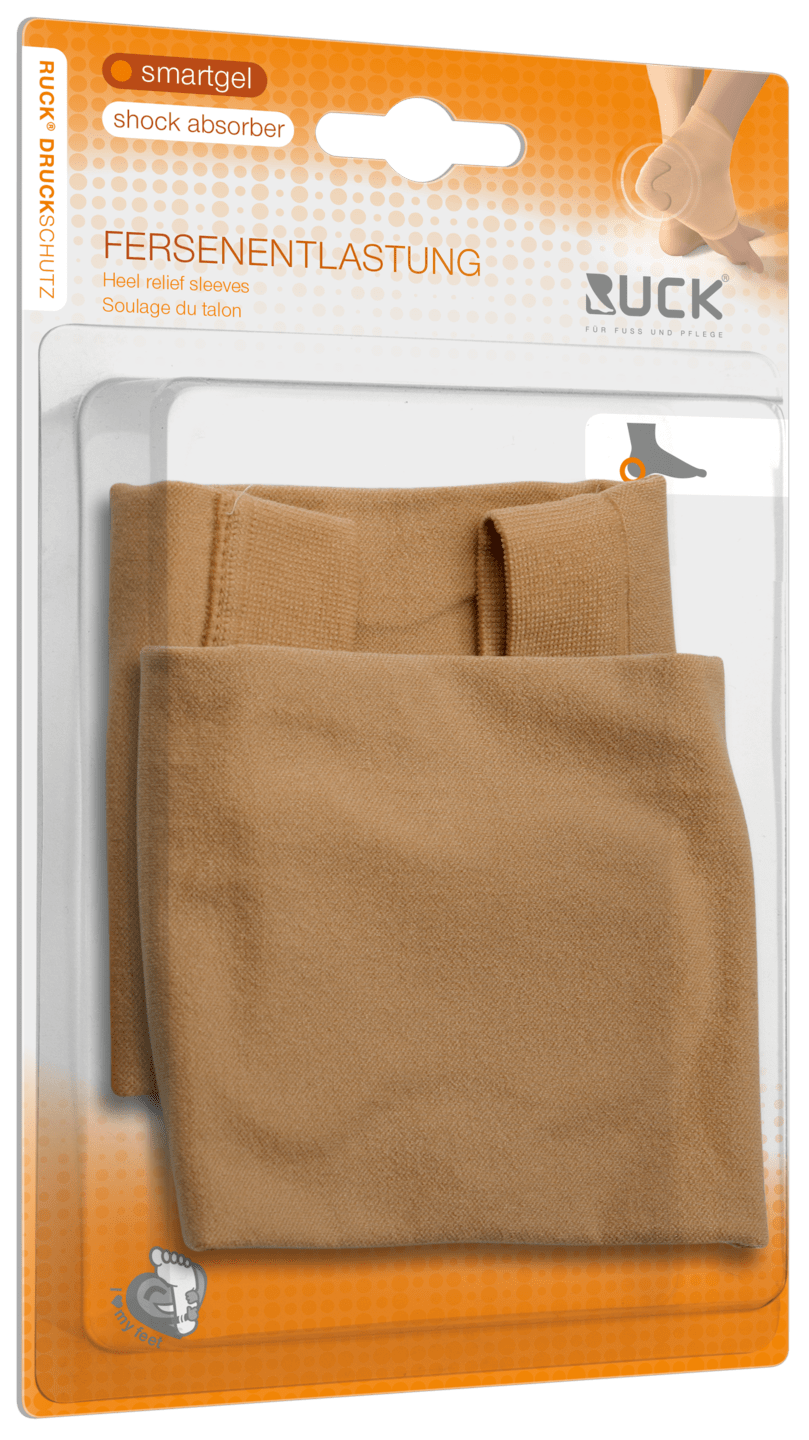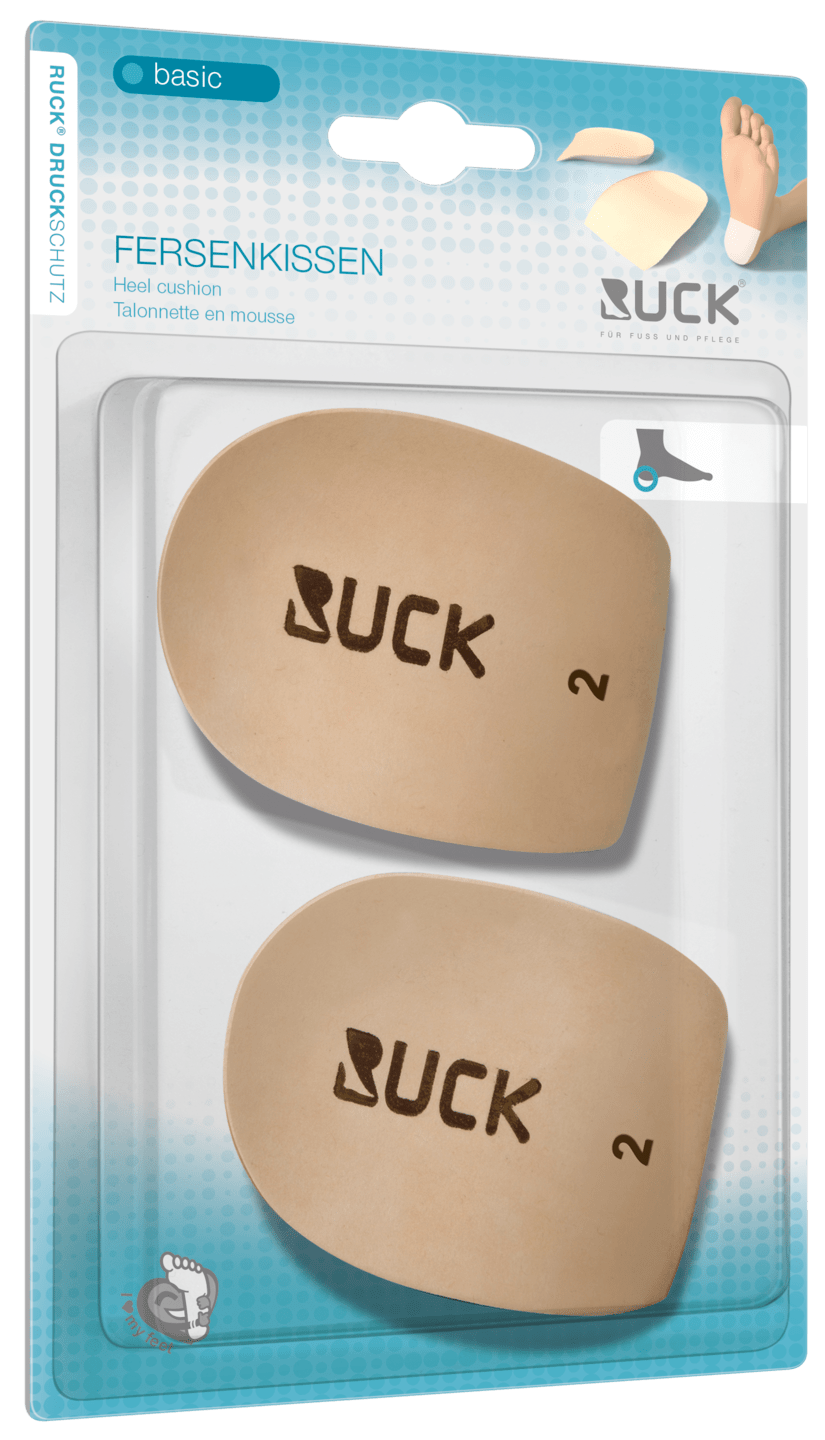Heel spur
Heel relief with medical products from RUCK
If patients complain of a painful rear sole of the foot, the diagnosis is often heel spur. The medical aids for heel relief received from RUCK can help here. However, it is essential to know the typical signs, causes and treatment methods of the presentation beforehand.
Heel spur: definition, diagnosis and causes
A heel spur is described as a bony hardening on the heel bone that has the shape of a thorn. The inflammatory change often causes chronic irritation, which is accompanied by severe pain when the foot is overloaded.
In most cases, the orthopaedist makes a professionally confirmed diagnosis. X-ray, ultrasound or MRI examinations usually provide information.
These signs indicate a heel spur
A heel spur typically manifests itself thanks to pressing pain on the heel bone that occurs when walking. The health problems can be felt in both the upper and lower areas of the heel bone. They improve when the foot is at rest. However, they are present when standing and walking. If the deformity is at an advanced stage, the pain often does not stay away even if the foot is inactive. Those affected usually describe the pain as stabbing or drilling.
Main causes of the heel spur presentation
The heel spur is often located in an inflamed arch of the foot, which can either be made in the run-up to the disease or form during it. Overloading and incorrect loading are often responsible for the ossification. The following causes can also play a role:
- Misalignment of the foot
- overweight
- incorrect footwear
- overexertion in sports
- shortened tendons
Treatment methods: Heel relief is the be-all and end-all
The first and most important step in treating heel spurs is always heel relief. The phase of rest should ensure that the inflammation subsides and the pain is minimalist. Accordingly, it is essential that you ask your patients to take a break from walking, standing and sport.
Products that have the aim of relieving pressure on the heel also provide helpful support in the healing process. RUCK online shop, fabric supports with an integrated gel heel cup are available for this purpose to reduce pressure. The heel cushions from RUCK also ensure that the heel is relieved and comfortable while standing and walking.
Another practical piece of advice is to avoid wearing incorrect footwear in future, to use insoles and to cool the affected area on a regular basis. Surgery is considered in very few cases. Instead, physiotherapy and recurring foot gymnastics sessions are recommended.
Effectively prevent health problems thanks to heel spurs
The largest chance of escaping heel spurs is to ensure permanent heel relief. This action applies to both leisure activities and everyday working life, as anyone who should be standing on their feet for long periods every day runs the risk of developing a heel spur at some point.
It is also important to wear comfortable, high-quality shoes. Ideally, these should then be designed to support the footbed. Anyone who is yet suffering from a foot deformity or there are signs that it will cause health problems in the future should have it treated in good time.
Morbid obesity is also a common trigger for heel spurs and should therefore be ruled out in advance or eliminated as quickly as possible.
Last but not least, regular exercises that have a vibrant effect on the foot muscles are practical. They prevent misalignments of the foot and stretch the tendons. One option, for example, is to often walk barefoot on uneven bases in the great outdoors. You can also advise your patients to pick up objects located on the base with their toes.






















































